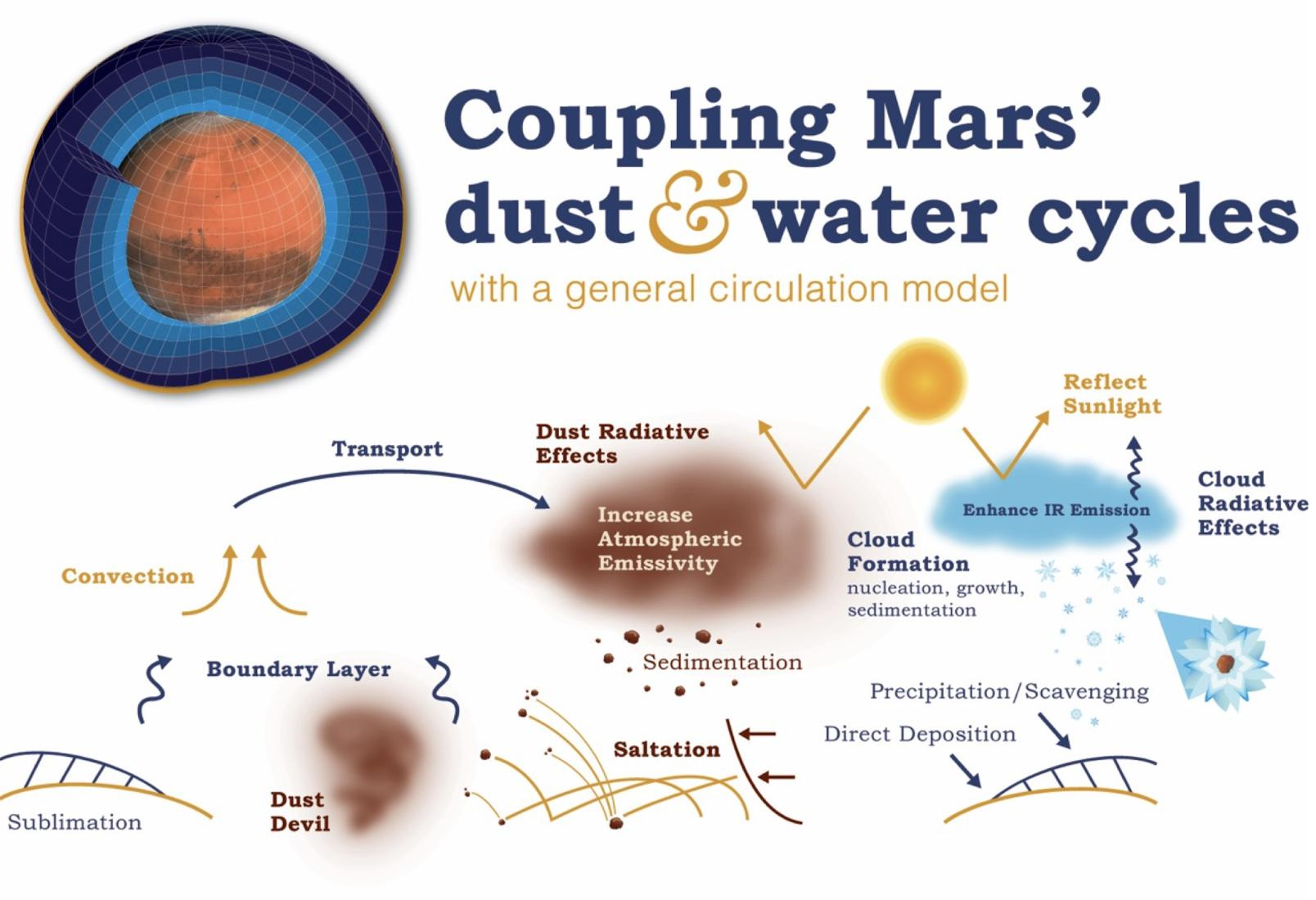Water ice clouds on Mars are made of water ice droplets/crystals nucleating on airborne dust particles. In order to study these clouds, we use a hierarchy of tools including theoretical equations, models and observations (from the different instruments onboard the Martian orbiters, landers, and rovers). These tools help us to understand the mechanisms of formation and the evolution of these particles in the Martian atmosphere, both on microscopic and macroscopic levels, and in constraining the optical and microphysical properties of the particles.
We represent the Mars water cycle in the Ames GCM by including water sublimation, water ice cloud nucleation, growth, transport, and gravitational sedimentation. See Haberle et al. (2019) for details. For current day Mars simulations, the North Polar Residual Cap (NPRC) is assumed to be the only source of atmospheric water. We represent dust and cloud particle sizes as lognormal distributions with the first two moments for computational efficiency. Simulated water ice clouds, particularly those that tend to form over the NPRC during summer, can be quite sensitive to the time step used for the microphysical calculations. To mitigate this issue, we have implemented a time splitting scheme similar to the one described in Navarro et al. (2014).



























